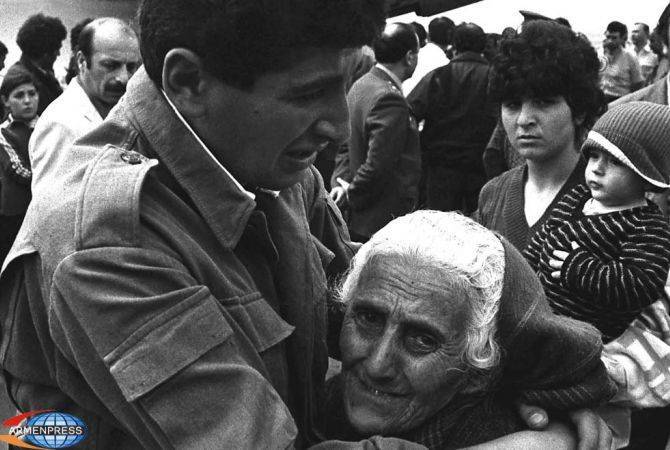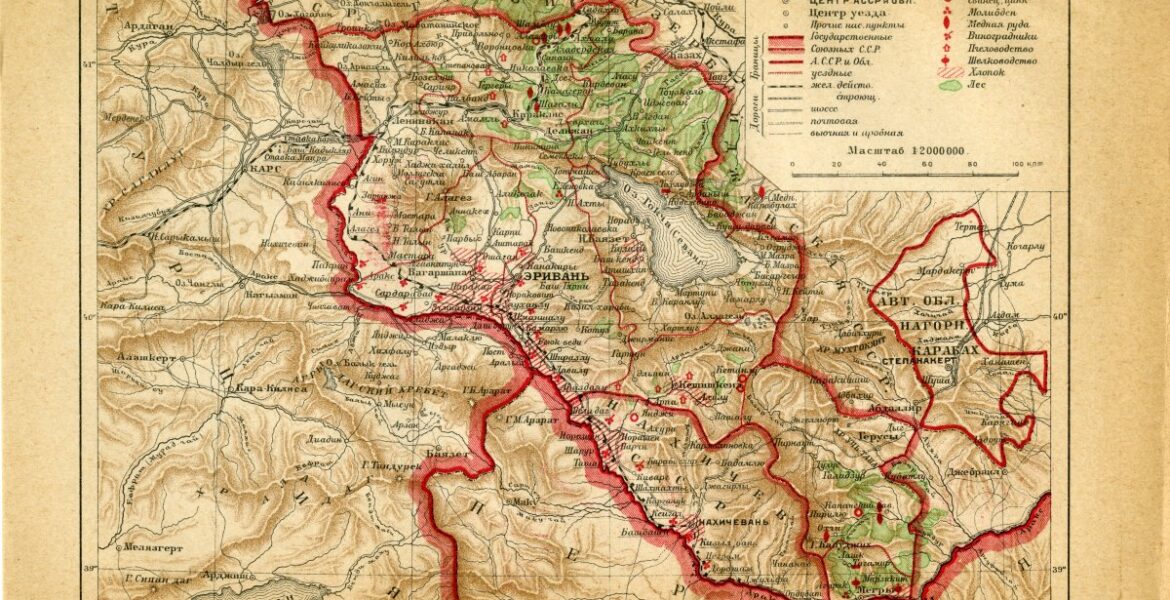Its common opinion that Nagorno-Karabakh, is an unsolvable conflict as the two principles of international law contradict themselves: the right to self-determination and the right to territorial integrity.
But the picture seems to be different as Artsakh - the historic Armenian name of Nagorno-Karabakh - has nothing in common with the territorial integrity of Azerbaijan, and I am going to show why.
Pre-Soviet Period
Artsakh is an integral part of Historic Armenia, it is mentioned in the works of Strabo, Pliny the Elder, Claudius Ptolemy, Plutarch, Dio Cassius, and other ancient authors. Ancient Greek sources called the area Orkhistene.
In contrast, Azerbaijan is a relatively young country, which first appeared on the political map in 1918 with the name Democratic Republic of Azerbaijan (1918-1920). It was never formally recognized by the international community or by the League of Nations.
During 1918-1920, 95 percent of the population of Nagorno-Karabakh were Armenians, and they convened their first congress, which proclaimed Nagorno-Karabakh as an independent political unit. The legislative power in Nagorno-Karabakh was exercised by the Assemblies of Armenians of Karabakh.
Between May 1918 and April 1920, Azerbaijan, supported by the military units from Turkey, committed acts of violence and mass killings against the Armenian population of Nagorno-Karabakh.
The efforts of the Government of Azerbaijan to solve the Karabakh problem by military means provoked the organization of Karabakh's` self-defense.
Soon after, military units from the Republic of Armenia came to rescue the oppressed population of Karabakh and fully liberate Karabakh. On April 23, 1920, the Ninth Assembly of Armenians of Karabakh declared Nagorno-Karabakh as an inalienable part of the Republic of Armenia.
Soviet Period
On November 30, 1920, the now-Soviet Government of Azerbaijan adopted a Declaration on recognizing Nagorno-Karabakh, Zanghezour, and Nakhichevan as part of Soviet Armenia. On July 4th, 1921, The Caucasian Bureau of the Communist Party of Russia convened a plenary meeting in the capital of Georgia, Tbilisi, during which it again confirmed the fact that Nagorno-Karabakh belongs to the Armenian SSR.
However, during the nights of July 4 and 5, 1921, a new decision was dictated by Soviet leader Joseph Stalin, which stated: “Proceeding from the necessity of establishing peace between Muslims and Armenians... include Nagorno-Karabakh in the Azerbaijan SSR, granting it wide regional autonomy with an administrative center of Shushi, included in the autonomous region.”
These facts demonstrate, Nagorno-Karabakh belonged to the Azerbaijan SSR, neither during the Sovietization of Azerbaijan nor after the establishment of the Soviet power in Armenia when Baku recognized all disputed territories as Armenian.
On the other hand, with or without procedural violations, the legitimacy of this forum is seriously questioned.
The decision of the Caucasian Bureau of the Central Committee of the Russian Communist Party-Bolsheviks is an unprecedented legal act in the history of International Law: the political party of a third country, with no legal power or jurisdiction, decided the status of the territory of Nagorno-Karabakh.
In 1988, in response to the self-determination claims of the Armenian population of Nagorno-Karabakh, the Azerbaijani authorities organized massacres and ethnic cleansing of the Armenians on the entire territory of Azerbaijan, particularly in Sumgait, Baku, and Kirovabad.

Process of independence:
On September 2, 1991, based on the USSR Law on “The procedures of the resolution of problems on the Secession of a Union Republic from the USSR,” a joint session of deputies of all levels of Nagorno-Karabakh and the Shahumyan region proclaimed the independence of the Nagorno Karabakh Republic (NKR), which was strengthened by the referendum of Independence of Nagorno-Karabakh, where 99.89% of participants voted “in favor” of Independence.
On October 18, 1991, the Republic of Azerbaijan confirmed its independence by the adoption of a “Constitutional Act on State Independence.” The same Constitutional Act considered the establishment of the Soviet power in Azerbaijan as “annexation by Soviet Russia” which “overthrew Azerbaijan’s legal Government.”
Thus, the Republic of Azerbaijan declared the establishment of Soviet power in Baku illegal and rejected the whole Soviet political and legal heritage.
When the Republic of Azerbaijan rejected Soviet legal heritage in 1991, the international subject to which the territories were passed in 1920 ceased to exist.
By rejecting the legal heritage of the Azerbaijan SSR of 1920-1991, the Republic of Azerbaijan has lost all claims to the territories passed to Soviet Azerbaijan in July 1921 - namely Nagorno-Karabakh.
It is important to highlight that Nagorno-Karabakh and Azerbaijan became independent according to the same domestic Soviet Law, so the legal bases of the independence of these two republics are equivalent.
Current stage:
In 1991, Azerbaijan launched a war against Nagorno-Karabakh, which lasted until May 1994, when Azerbaijan, Nagorno-Karabakh, and Armenia via the mediation of Russia, signed a ceasefire agreement. The fact that Azerbaijan signed a ceasefire agreement with Nagorno-Karabakh is evidence that Karabakh was considered a distinct legal entity.
During all these years, Azerbaijani authorities, having all the necessary resources and a permanent military partner (Turkey), kept violating the ceasefire agreement.
The border clashes turned into wars in summer 2014, and in April 2016, both times military activities stopped by the mediation of Russia.

On September 27, 2020, Azerbaijan, backed by Turkey and with the involvement of foreign terrorist fighters, launched a new war against Artsakh. Thousands of soldiers from both sides were killed before the ceasefire was made.
Still, now the Republic of Artsakh has no status, and there is no real guarantee that Armenians of Artsakh will not face the new ethnic cleansing,
So, we can conclude that the territorial integrity of the Republic of Azerbaijan has nothing in common with the Republic of Artsakh, as Artsakh (Nagorno-Karabakh), was never been part of independent Azerbaijan, neither in 1918-1920 nor after 1991.
Anzhela Mnatsakanyan is a PhD student from Armenia. She specializes is the Eastern Partnership, Russia, and the Nagorno-Karabakh conflict.


